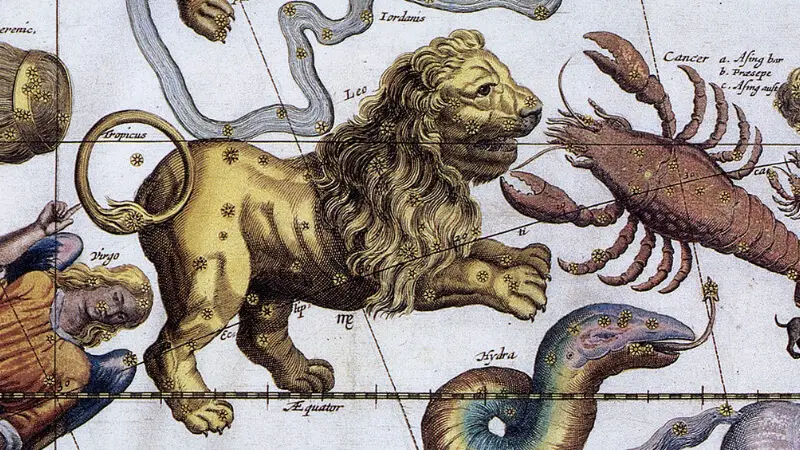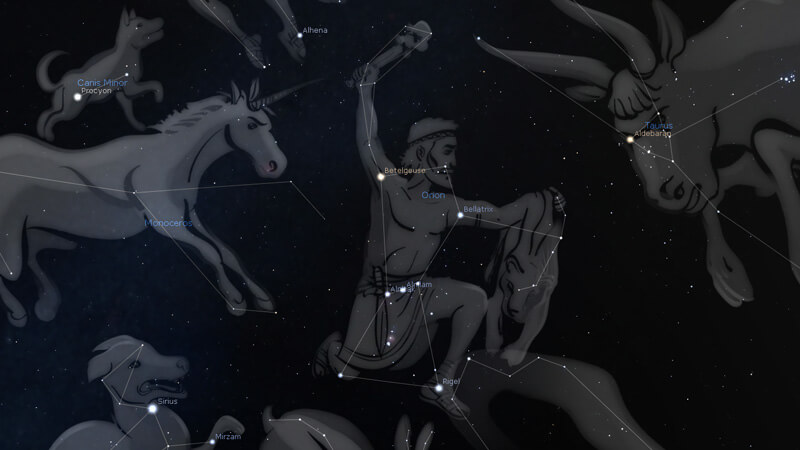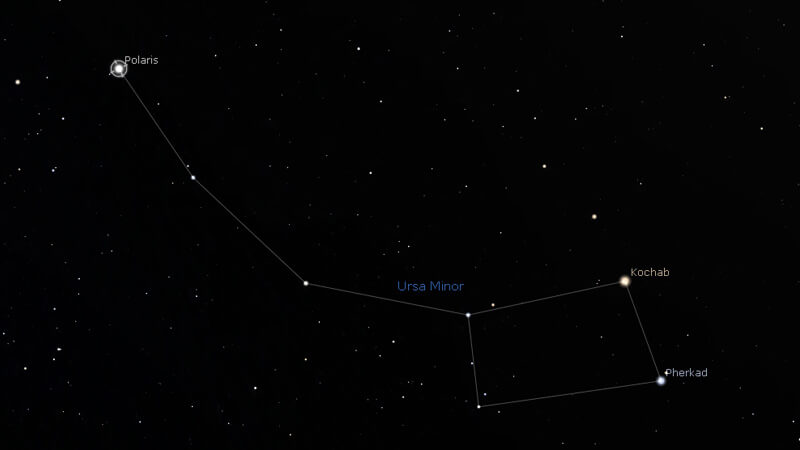Have you ever gazed at the night sky and pondered, “Why do we have constellations?”
These celestial patterns, though enchanting, can seem puzzling. Why would humans organize stars into shapes in the first place?
In this article, I will demystify the existence of constellations. We’ll explore their historical roots, role in navigation, and significance in modern astronomy. By the end, you’ll grasp the reasons behind constellations, shedding light on this celestial wonder.
Let’s dive right in.
Introduction: Why do Constellations Exist?

Constellations are groups of individual stars that are identified and named by humans. They have been used for centuries to navigate the night sky and tell stories about the stars. But why do constellations exist?
Why do Constellations Exist?
Constellations exist because they provide a structured way for humans to make sense of the vast and seemingly random night sky. They serve as a tool for navigation, storytelling, and understanding the universe’s beauty and order.
But constellations are more than just a practical tool for stargazing. They have played a fundamental role in human culture throughout history.
In ancient times, many civilizations used constellations to tell stories about the gods and the world around them. For example, the constellation Orion was associated with the Greek mythological hunter of the same name.
Constellations have also been used as a way to mark the changing seasons.
The zodiac, a group of constellations that lie along the ecliptic, or the path of the Sun across the sky, was used by ancient civilizations to mark the solstices and equinoxes.
Constellations continue to be a source of fascination and wonder in modern times. Astronomers use them to study the stars and learn more about the universe. And they are still used by people worldwide to connect with the night sky and appreciate its beauty.
So why do constellations exist?
They exist because humans naturally desire to understand and organize the world around them. By grouping stars into recognizable shapes, humans can make sense of the night sky and tell stories about the universe.
Some important points to remember:
- Constellations are a way for humans to organize the stars in the sky.
- They have played an integral role in human culture throughout history.
- Constellations have been used as a way to mark the changing seasons.
- They continue to be a source of fascination and wonder for people worldwide.
History of Constellations

Constellations have been a part of human history for thousands of years. They were first used to navigate the night sky and mark the passing of time. They have evolved over time.
What is the History of Constellations?
The history of constellations spans millennia, with ancient civilizations like the Babylonians, Egyptians, and Greeks using them to navigate, tell stories, and explain natural phenomena. Over time these celestial patterns evolved over time into the modern system of 88 constellations, crucial for cultural heritage and scientific exploration.
Ancient Civilizations
The origin of constellations can be traced back to ancient civilizations such as the Babylonians, Egyptians, and Greeks. These civilizations used constellations to tell stories and explain natural phenomena. For example, the Babylonians created a system of constellations based on their religion, while the Egyptians used constellations to track the movement of the Nile River.
Early Constellation Systems: Babylonians
The Babylonians created the earliest known constellation system in the 2nd millennium BCE. They divided the sky into 12 equal parts, each named after a different constellation. They believed that the stars were gods and that their movements in the sky reflected the gods’ will. The Greeks later adopted this system and added more constellations to it.
Development of Modern Constellation Systems
In the 16th century, European astronomers began to develop modern constellation systems based on the work of the Greeks. These systems were based on celestial longitude and latitude and were used to map the night sky.
Egyptian Constellations
The Egyptians used constellations to track the movement of the Nile River. They believed that the stars were the souls of their ancestors and that they could communicate with them through the stars. They created a system of constellations based on the movement of the stars throughout the year.
Greek Constellations
The Greeks were the first to create a systematic approach to constellations. They made a system of 48 constellations, each representing a different mythological figure or object. The Romans later adopted this system, becoming the basis for modern constellation systems.
Constellations in Modern Astronomy
Astronomers use constellations to track the movement of stars and galaxies and study gravity’s and other forces’ effects on celestial objects. Today, constellations are still used to navigate the night sky and locate celestial objects. They are also used as a way to study the history and evolution of the universe.
Changes in Constellation Systems Over Time
Constellation systems have evolved as our understanding of the universe has evolved. New constellations have been added, and old ones have been removed. The most recent changes to the constellation system occurred in 1922 when the International Astronomical Union (IAU) standardized the system of 88 constellations that we use today.
Importance of Constellations in Modern Astronomy
Constellations are still an essential part of modern astronomy. They are used to locate and study celestial objects and track the movement of stars and galaxies. They are also used to study the history and evolution of the universe.
Use of Constellations in Research
Constellations are used in various research fields, including astrophysics, cosmology, and astrobiology. They are used to study the properties of stars and galaxies, the structure of the universe, and the possibility of life on other planets.
Relationship Between Stars and Constellations
Constellations are made up of stars, but not all stars are part of a constellation. Stars are grouped based on their proximity in space, while constellations are based on their position in the sky as seen from Earth.
In summary, constellations have been a part of human history for thousands of years.
They have evolved from the early Babylonian and Egyptian systems to the modern system of 88 constellations.
Constellations are still a critical part of contemporary astronomy and are used to study the history and evolution of the universe.
In the next section, I will discuss the different types of constellations and how they are named.
how many constellations exist?

Have you ever looked up at the night sky and wondered why there are so many different patterns of stars? Well, wonder no more! In astronomy, there are 88 officially recognized constellations, each with its unique story and significance.
What Are the 88 IAU Constellations?
The 88 IAU constellations divide the celestial sphere into northern and southern regions, each with unique star patterns. From Ursa Major to Orion, these constellations have deep cultural roots and continue to guide stargazers and astronomers in exploring the night sky.
Classification of the 88 Constellations
The 88 constellations are divided into two categories: northern and southern. The northern constellations are visible from the northern hemisphere, while the southern constellations are visible from the southern hemisphere. Each constellation is also assigned a Latin name and is represented by a specific pattern of stars.
Significance of the 88 Constellations
The constellations have been an indispensable part of human history for thousands of years. Ancient civilizations used the stars to navigate and keep track of time. They also created stories and myths based on the patterns they saw in the sky. Astronomers use constellations to locate and study stars, galaxies, and other celestial objects.
Here are a few interesting facts about the 88 constellations:
- The largest constellation is Hydra, which takes up 3.16% of the sky.
- The smallest constellation is Crux, also known as the Southern Cross.
- The most famous constellation is probably Orion, which is visible from almost every part of the world.
- The zodiac constellations are the 12 constellations that lie along the ecliptic, the path that the Sun appears to follow across the sky.
As you can see, the 88 constellations are more than just pretty patterns in the sky. They have a rich history and play an important role in astronomy today.
Next, I will explain why these constellations exist in the first place.
FREE STARGAZING CHECKLIST
My 5-page Stargazing Checklist will enhance your astronomical observations.
Follow this free checklist to navigate the night sky with confidence, clarity, and a sense of preparedness for a rewarding stargazing experience.

Reasons for Constellations’ Existence

Constellations have been a part of human history for thousands of years. They are groups of stars that form recognizable patterns in the sky. Constellations exist for many reasons, including their cultural significance, use in navigation, and importance in astronomy and astrophysics.
Cultural Significance
Constellations are indispensable in many cultures around the world. They have been used for storytelling, religious and spiritual practices, and to mark the changing of seasons. Different cultures have their unique constellations and stories associated with them. For example, the Greeks saw the constellation Orion as a hunter, while the Chinese saw it as a celestial dragon.
Navigation
Constellations have been used for navigation for centuries. Before the invention of modern technology, sailors and travelers would use the stars to navigate across oceans and deserts. By studying the positions of the stars, they could determine their location and direction.
The North Star, also known as Polaris, is significant for navigation because it remains in a fixed position in the sky. It’s not the brightest star but remains directly above the north pole.
Astronomy and Astrophysics
Constellations are also crucial in astronomy and astrophysics. Constellations help astronomers locate and study specific stars, galaxies, and other celestial objects. They also provide a way to map the sky and organize astronomical data. By checking the positions and movements of the stars within constellations, astronomers can learn more about the universe.
Some famous constellations, like the Big Dipper and Orion, have played an essential role in human culture for centuries. They have been used in art, literature, and even advertising. For example, the Big Dipper symbolizes the ice cream brand Baskin-Robbins.
Modern technology has made navigation more effortless, but the stars remain a vital tool for those who travel across the planet. In addition to their historical and cultural significance, constellations are used for navigation today. Sailors and pilots still use celestial navigation to determine their position and direction.
To summarize, constellations exist for many reasons, including their cultural significance, use in navigation, and importance in astronomy and astrophysics. They have played a paramount role in human history and continue to be studied and used today.
Easy Constellations: star patterns in the sky
What Are Some Famous Constellations?
Famous constellations like Orion, Ursa Major, and Cassiopeia have transcended generations with captivating myths. Orion, the mighty hunter, and Ursa Major, the Great Bear, are recognizable to many, adding enchantment to our nightly stargazing.

Looking up at the night sky, you might recognize famous constellations passed down through generations.
Here are a few of the most well-known constellations and the stories behind them:
- Orion: This constellation is named after the Greek mythological hunter Orion. According to the myth, Orion was killed by a scorpion and was placed in the sky as a constellation by Zeus. The three bright stars in a row represent Orion’s belt, and the two stars above and below the belt represent his shoulders and feet.
- Ursa Major and Ursa Minor: Also known as the Big Dipper and Little Dipper, these two constellations are easy to spot in the northern hemisphere. Ursa Major is named after a bear, and the seven bright stars form a shape resembling a ladle or dipper. Ursa Minor contains the North Star, which is helpful for navigation.
- Cassiopeia: This constellation is named after the queen Cassiopeia from Greek mythology. According to the myth, Cassiopeia boasted about her beauty and was punished by being placed upside down in the sky. The five bright stars form a W or M shape, depending on the time of year and your location.
These constellations have been passed down through generations. While they are not the only constellations in the sky, they are some of the most recognizable.
Misconceptions about Constellations
When it comes to constellations, there are a lot of misconceptions out there.
Here are some of the most common misconceptions:
- All stars in a constellation are close to each other. This is not true. Stars in a constellation can be millions of light-years apart from each other. They appear close to each other from our point of view on Earth.
- Constellations are only visible at certain times of the year. They may be harder to see depending on the time of year and location . While some constellations are more visible at certain times of the year, they are always in the sky.
- Constellations have scientific significance. They are a way for people to organize and remember the stars in the sky. While constellations help locate stars and other celestial objects, they don’t have any scientific relevance.
Understanding these misconceptions is important to have a more accurate understanding of constellations. Debunking myths about constellations can also help you appreciate them more.
For example, knowing that stars in a constellation are not close to each other can make you appreciate the vastness of the universe and the incredible distances between objects in space.
Understanding that constellations are not only visible at certain times of the year can also encourage you to stargaze more often and discover new constellations throughout the year.
In short, knowing the truth about constellations can enhance your enjoyment of astronomy and deepen your understanding of the universe.
Frequently Asked Questions
How many constellations are there?
There are 88 constellations recognized by the International Astronomical Union (IAU). These constellations are divided into two categories: northern and southern. The northern constellations are visible from the northern hemisphere, while the southern constellations are visible from the southern hemisphere.
They were first identified by ancient civilizations who used them for navigation, storytelling, and religious purposes. Today, constellations are still used for navigation, but they are also studied by astronomers to learn more about the universe.
How are constellations formed?
Constellations are formed by the apparent arrangement of stars in the sky as seen from Earth. These stars are not close to each other in space, but they appear close when viewed from our perspective.
The shapes and patterns of constellations are determined by the cultures that named them. For example, the constellation Orion is named after the Greek mythological hunter, and its shape is meant to resemble a hunter’s belt and sword.
Constellations are constantly changing due to the movement of stars in space, but their patterns remain relatively stable over time.
What are constellations?
Constellations are groups of stars that form patterns in the sky. They were first identified by ancient civilizations who used them for navigation, storytelling, and religious purposes. Today, constellations are still used for navigation, but they are also studied by astronomers to learn more about the universe.
How are constellations named?
Constellations are named after various cultures’ mythological figures, animals, objects, and characters. For example, the constellation Ursa Major is named after the Latin for “Great Bear” and is associated with the myth of Callisto and Zeus in Greek mythology.
The names of constellations are often based on the cultures that named them. For example, the ancient Greeks and Romans named many constellations in the northern hemisphere. In contrast, indigenous cultures in South America and Australia named many constellations in the southern hemisphere.
The names of stars within constellations are based on Bayer designation, which assigns a lowercase and Greek letters to each star. The lowercase letter represents the constellation, while the Greek letter represents the star’s brightness within the constellation.
Summary: Why Constellations Exist
Thank you for reading my article “Why Do Constellations Exist?”
Constellations are groups of stars that form recognizable patterns in the night sky. These patterns have been observed and named by humans for thousands of years. There are 88 officially recognized constellations, each with its own unique shape and history.
Why are there constellations?
Constellations are helpful for navigation and astronomy. They help us locate certain stars and planets in the night sky. They also help us understand the movement of celestial bodies and the rotation of the Earth.
Each constellation comprises stars that are distributed in space in three dimensions. The stars appear in the same plane because we view them from very far away. Stars vary greatly in size, distance from Earth, and temperature.
Constellations were named after objects, animals, and people long ago. These constellations have been passed down through generations and are recognized by people worldwide. Some famous constellations include Orion, Ursa Major, and Cassiopeia.
In conclusion, constellations are fascinating and beautiful formations in the night sky. Humans have observed and named them for thousands of years, and have helped us navigate and understand the universe around us.
Whether you are an amateur astronomer or enjoy stargazing, taking the time to observe and appreciate constellations can be a rewarding and enlightening experience.
So next time you look up at the stars, take a moment to appreciate the wonder of the constellations above.




